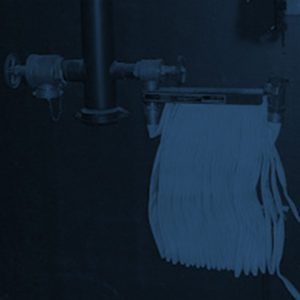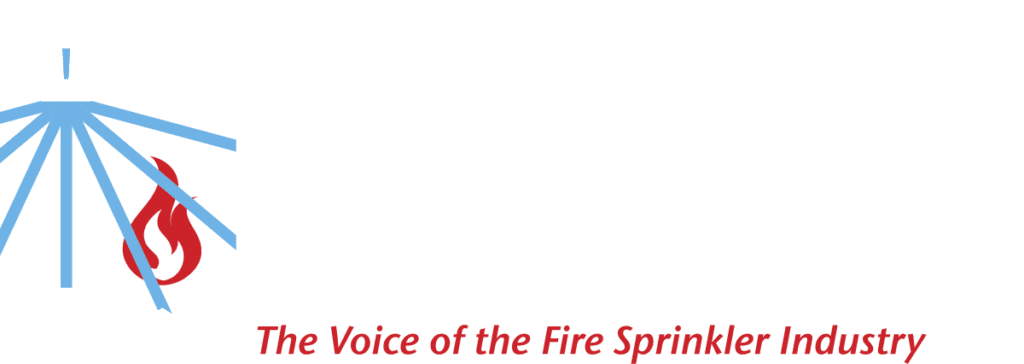Combination Sprinkler-Standpipe Systems: You Might Be Surprised

What makes up a combination sprinkler-standpipe system—and what are some key considerations?
Understanding combination sprinkler standpipe systems is simple. The fire sprinkler system and standpipe system share a common riser. Section 3.3.20.3 of the 2019 edition of NFPA 14: Standard for the Installation of Standpipes and Hose Systems defines a combined system as:
A standpipe system that supplies both hose connections and automatic sprinklers.
That definition also holds a hidden clue to understanding the design implication of a combined fire sprinkler system and standpipe system. While it states “automatic sprinklers,” it does not reference the type of required standpipe activation. That leads us to a discussion of the different kinds of standpipes systems and their unique characteristics.
Types of standpipes in combination systems
The 2019 edition of NFPA 14 defines seven different types of standpipes systems:
- Automatic dry standpipe system
- Automatic wet standpipe system
- Combined system
- Manual dry standpipe system
- Manual wet standpipe system
- Semiautomatic dry standpipe system
- Wet standpipe system
However, only certain types of standpipe systems can be combined with fire sprinklers. We can quickly eliminate a manual dry standpipe system, as it does not have a permanent water supply capable of supplying our automatic sprinkler design. The semiautomatic standpipe system is simply eliminated by the “automatic” sprinkler requirements found in NFPA 13: Standard for the Installation of Sprinkler Systems.
The combined system and wet systems are obvious choices and only indicate that the risers are shared wet risers. This essentially leaves us with a choice between automatic dry standpipe, automatic wet standpipe, and a manual wet standpipe system—the key difference being the choice between automatic and manual. The term “automatic” simply means that the system will automatically provide required pressure and flow while, in contrast, the “manual” system water supply is only required to meet sprinkler demand. The manual standpipe side of the system will require supplemental pressure and flow to be supplied by the fire service.
Hose connections in combination systems
For this discussion, one must also understand that while hose connections are found in combination systems, hose connections may not always be required to meet both the flow and pressure requirements of a class I or III standpipe system. It must also be noted that combination systems are not allowed in all occupancies. Combined-riser-designed systems are typically found in large or multiple floor-structures below the local jurisdiction’s height limitations for high-rises.

Choosing the right combination sprinkler standpipe system
 The choice of a manual wet set-up supplementing a combination standpipe system over an automatic wet is used to reduce total system cost by relying on the fire service to provide pump pressure. This allows a mid-rise building to be constructed without the need for a building fire pump. This often comes as a surprise to the fire service, which often believes that all standpipe hose connections are created equal when it comes to pressure and flow requirements. There must be a clear strategic plan for the use of combination systems, and fire service tactical considerations must start with the building’s system design.
The choice of a manual wet set-up supplementing a combination standpipe system over an automatic wet is used to reduce total system cost by relying on the fire service to provide pump pressure. This allows a mid-rise building to be constructed without the need for a building fire pump. This often comes as a surprise to the fire service, which often believes that all standpipe hose connections are created equal when it comes to pressure and flow requirements. There must be a clear strategic plan for the use of combination systems, and fire service tactical considerations must start with the building’s system design.
The local officials, both fire service and building officials, must understand local capabilities and have an in-depth understanding of the design differences and implications to be able to adequately provide the best level of fire protection for their communities.
Further reading on combination sprinkler standpipe systems.
Have more questions about combination sprinkler standpipe systems? NFSA members can reach out via our website or by calling 443-863-4464 for answers and support from our code, standards, and engineering experts. Not an NFSA member yet? Join today!
For over a century, the National Fire Sprinkler Association (NFSA) has served as the voice of the fire sprinkler industry. Our mission: advocating to protect lives and property through the widespread acceptance of the fire sprinkler concept. To join NFSA or learn more about the ways membership can benefit your organization, visit nfsa.org/join.
